Arlene Harrison from Harrison Hollow Designs left a comment asking what a slide was. Well my understanding was something that slides off and on a cord or wire. But later I began to think about the difference between a slide and a pendent with a bail. Or why isn’t the fish with the hole considered a bead? If I drilled the hole more in the center of the fish would it be a bead or does a bead have to have a design on all sides and be round?
What is the difference between my fish and the pendant I made for my class at Beads F.O.B. in Sarasota? I made the “bail” out of polymer clay for the class pendant and drilled a hole through the bail, with the fish I just drilled a hole straight through with no bail.
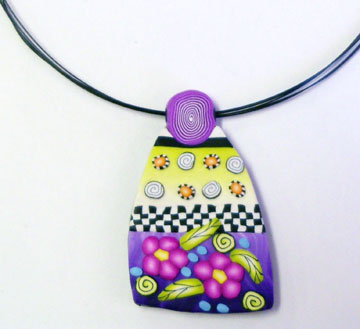 But when I googled bail here’s what I found;
But when I googled bail here’s what I found;
Bail A finding that connects a pendant to a necklace. They come in different forms: some clip onto the pendant, some have mounts to glue the pendant to, and some attach to a ring on the pendant. The purpose is to hold the pendant flat when worn.
So maybe the pendant above is really a slide just like the fish? I don’t know …….I’ll just have to ask Marty and Karen at Beads F.O.B.. But the good news is I can tell you how to make whatever they’re called.
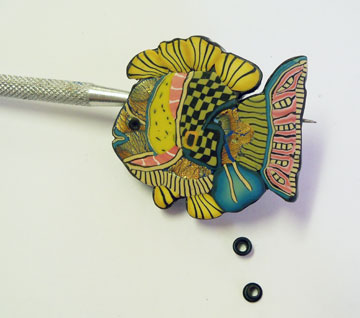 Once I’ve finished my mosaic fish I mount it on a piece of clay (double thickness of the widest pasta machine setting) and cut out with a exacto knife.
Once I’ve finished my mosaic fish I mount it on a piece of clay (double thickness of the widest pasta machine setting) and cut out with a exacto knife.
Then I poke a hole straight through the body of the piece and then insert small rivets that you can purchase in the scrapbook department.
I bake it and then remove the rivets and re-drill the hole with my Dremel tool then replace the rivets with a tiny bit of super glue. Make sure you don’t fill the hole with super glue. The rivets just finish the hole and neaten everything up.
Here are all my almost finished fishies, some are going to my Etsy shop. But I have to finish them by signing the back with my name and the date, so it will be later today.



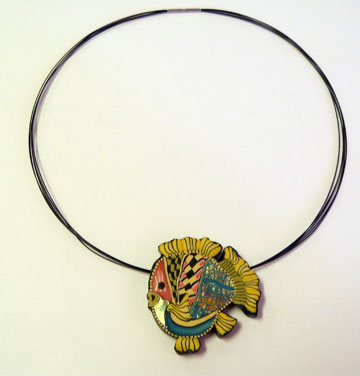
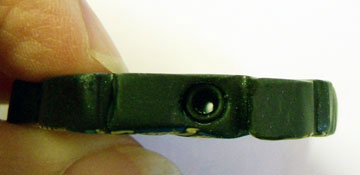
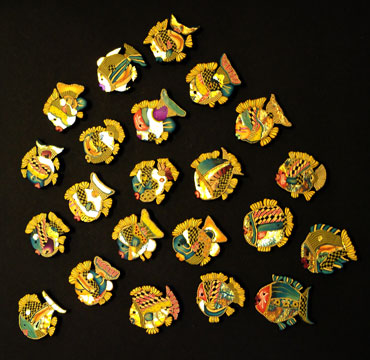
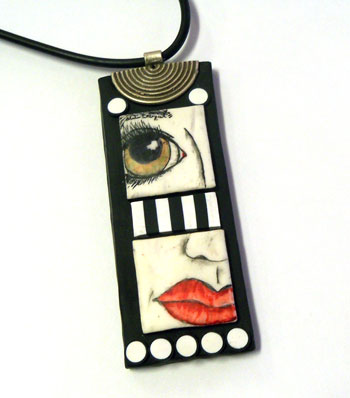
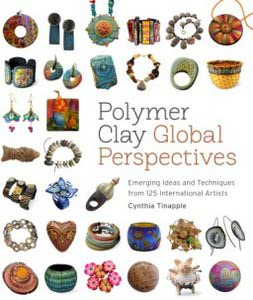
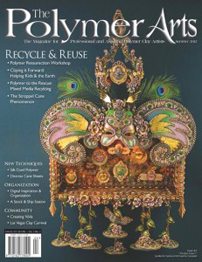
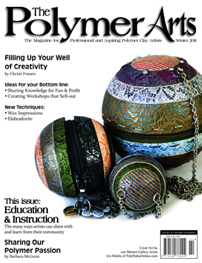
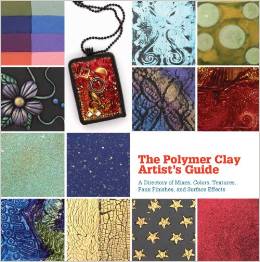
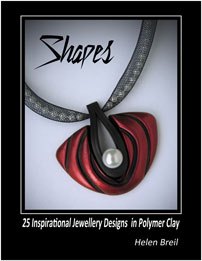
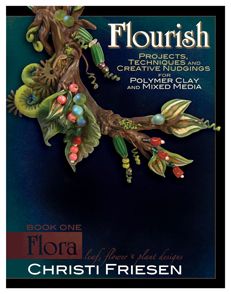
Comments